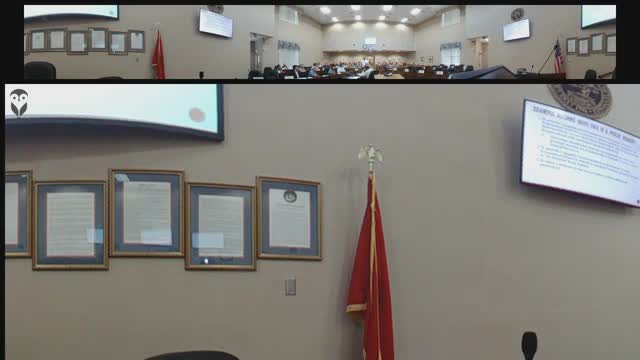Community divided over controversial rezoning proposal
August 21, 2024 | Sumner County, Tennessee
This article was created by AI summarizing key points discussed. AI makes mistakes, so for full details and context, please refer to the video of the full meeting. Please report any errors so we can fix them. Report an error »

In a recent government meeting, community members voiced their concerns regarding a proposed rezoning of a property currently designated as rural residential. The discussions centered around the potential transformation of the site into a commercial neighborhood, which would allow for retail operations that are not currently permitted under its existing zoning.
Residents expressed apprehension about the implications of such a change, citing fears that it could lead to a decline in property values and alter the character of their neighborhood. One speaker highlighted the original agreements made when the community was established, which included restrictions on the types of structures and activities allowed. Concerns were raised about the aesthetic impact of commercial operations, with some residents describing the current state of the property as an eyesore.
The property owner, who addressed the meeting, clarified that there are no plans to construct additional structures or operate a mechanics shop on the site. Instead, the owner emphasized a desire to revitalize the existing store, known as Side View Market, by offering discounted goods and potentially reintroducing popular food items from the past. The owner also noted efforts to clean up the property and improve its appearance, which had previously been neglected.
Zoning officials explained that the current rural residential designation does not permit general retail trade, which is why the rezoning is being sought. They indicated that if approved, the new zoning would allow for more flexibility in operations, including outdoor storage, which is currently restricted. However, any changes would require compliance with specific regulations, including parking and landscaping plans.
The meeting also touched on the historical significance of the property, with discussions about the implications of maintaining or demolishing existing structures. The owner assured attendees that any necessary improvements to meet zoning requirements would be addressed, although concerns about the potential costs of compliance were raised.
Overall, the meeting highlighted a community divided on the future of the property, balancing the desire for economic development against the need to preserve the neighborhood's character and property values. Further discussions and public hearings are expected as the rezoning proposal moves forward.
Residents expressed apprehension about the implications of such a change, citing fears that it could lead to a decline in property values and alter the character of their neighborhood. One speaker highlighted the original agreements made when the community was established, which included restrictions on the types of structures and activities allowed. Concerns were raised about the aesthetic impact of commercial operations, with some residents describing the current state of the property as an eyesore.
The property owner, who addressed the meeting, clarified that there are no plans to construct additional structures or operate a mechanics shop on the site. Instead, the owner emphasized a desire to revitalize the existing store, known as Side View Market, by offering discounted goods and potentially reintroducing popular food items from the past. The owner also noted efforts to clean up the property and improve its appearance, which had previously been neglected.
Zoning officials explained that the current rural residential designation does not permit general retail trade, which is why the rezoning is being sought. They indicated that if approved, the new zoning would allow for more flexibility in operations, including outdoor storage, which is currently restricted. However, any changes would require compliance with specific regulations, including parking and landscaping plans.
The meeting also touched on the historical significance of the property, with discussions about the implications of maintaining or demolishing existing structures. The owner assured attendees that any necessary improvements to meet zoning requirements would be addressed, although concerns about the potential costs of compliance were raised.
Overall, the meeting highlighted a community divided on the future of the property, balancing the desire for economic development against the need to preserve the neighborhood's character and property values. Further discussions and public hearings are expected as the rezoning proposal moves forward.
View full meeting
This article is based on a recent meeting—watch the full video and explore the complete transcript for deeper insights into the discussion.
View full meeting
